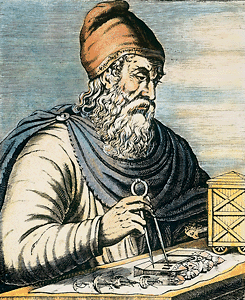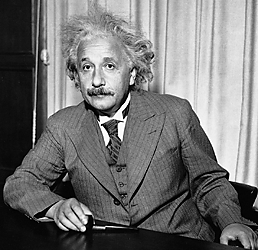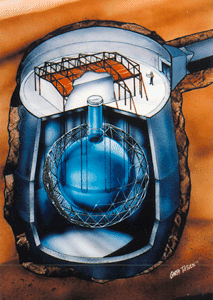Happy Pi Day!
Friday, March 14th, 2014March 14, 2014
March 14 marks an important date, from a whimsically mathematical perspective at least. The numerical designation of the date–3/14–coincides with the first digits of the number pi, the ratio of a circle’s circumference to its diameter. Pi, also written as the Greek letter of the same name, π, is approximately equal to 3.14. It’s even more approximately equal to 3.14159265359. Mathematicians have approximated pi for trillions of digits after the decimal point. But those digits keep on going forever, with no apparent pattern or repetition, which makes pi an irrational number–that is, a number that cannot be represented exactly by a fraction or a decimal.
Mathematicians call pi a constant. It seems to be a fundamentally important number in mathematics, and in our universe. Without pi, mathematicians could not find the areas of circles or the volumes of spheres and cones. Without pi, physicists could not accurately describe such phenomena as electricity, gravity, and quantum mechanics.

Archimedes was a mathematician and inventor of ancient Greece. He approximated pi as the fraction 22/7. (Granger Collection)

Albert Einstein was a German-born physicist. He used pi in his famous equations for general relativity. (© Hulton/Archive)
The ancients, notably the Greeks, had some idea that the ratio of a circle’s circumference to its diameter was a special quantity. The Greek mathematician Archimedes used geometry to approximate pi as the fraction 22/7. In the 1700′s, the Swiss mathematician Leonhard Euler discovered a famous formula that features pi:
eπi + 1 = 0
This formula relates five of the most important numbers in mathematics, pi included. The number e is another irrational number (named after the e in Euler’s name), approximately equal to 2.718281, that features prominently in calculus. The number i, called the imaginary unit, equals the square root of –1. Some mathematicians have called this formula one of the most beautiful expressions in mathematics.
Pi Day has its roots in the San Francisco Exploratorium museum, which has celebrated the holiday since 1988. As it happens, March 14 is also the birthday of the German-born American physicist Albert Einstein, who used pi in his famous equations for general relativity. Some people celebrate Pi Day by baking pies, which, of course, all feature the number pi in the ratio of their circumferences to their diameters.
Some people enjoy memorizing the digits in pi. According to the Guiness Book of World Records, the current champion is Chao Lu of China, who recited pi from memory to 67,890 places. This feat took 24 hours and 4 minutes.
Additional World Book articles:
Websites:



